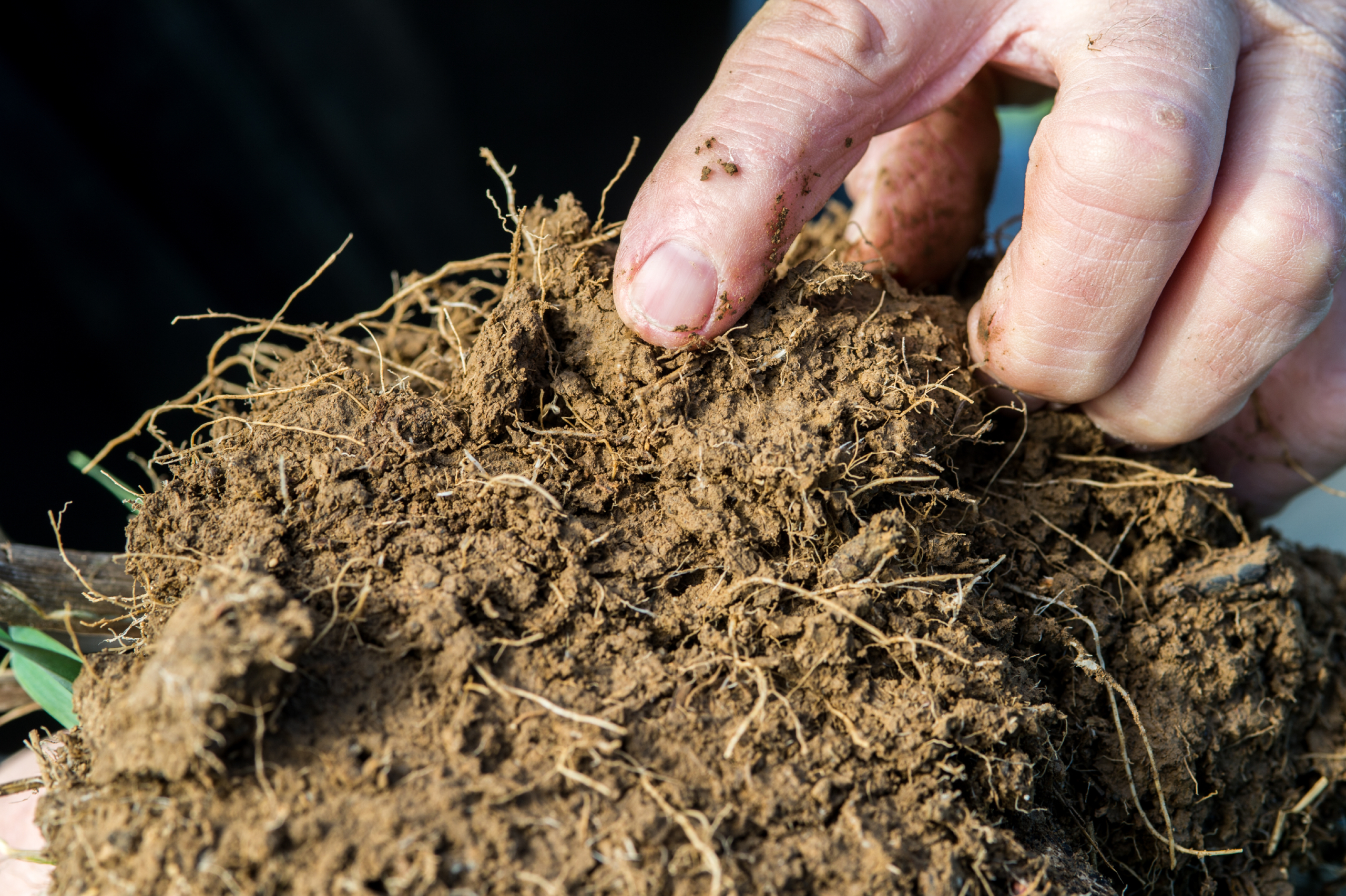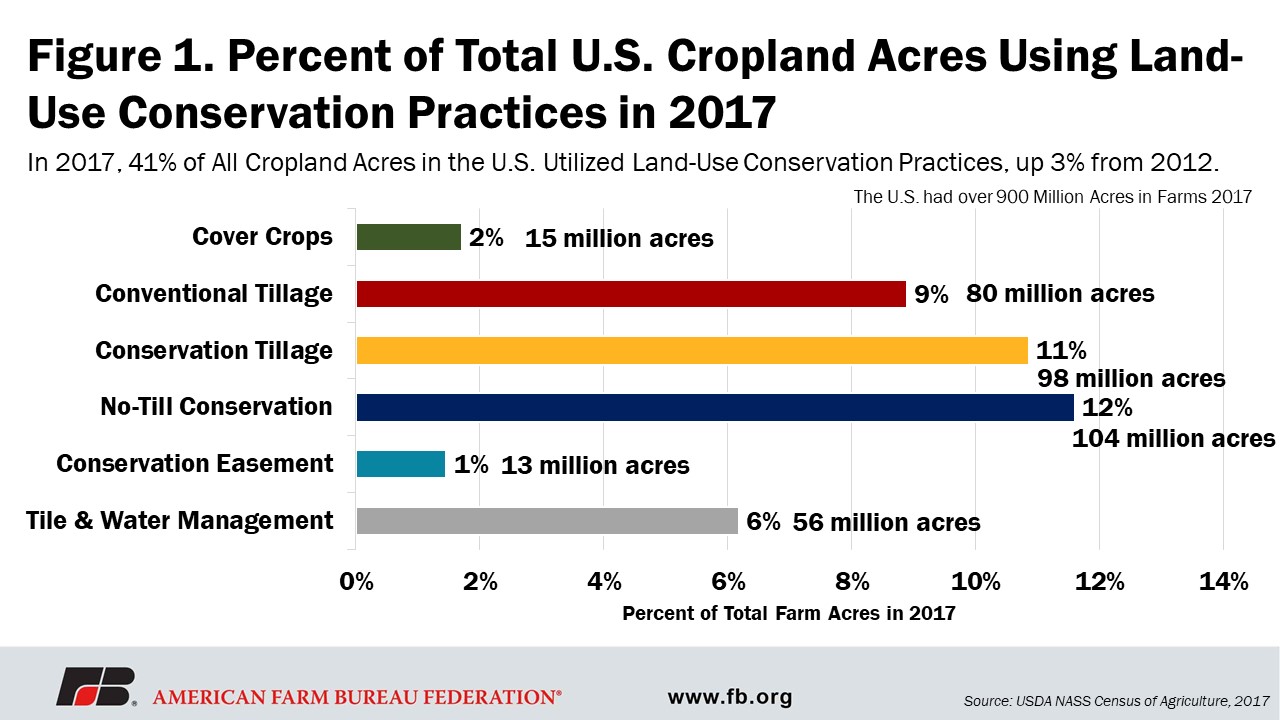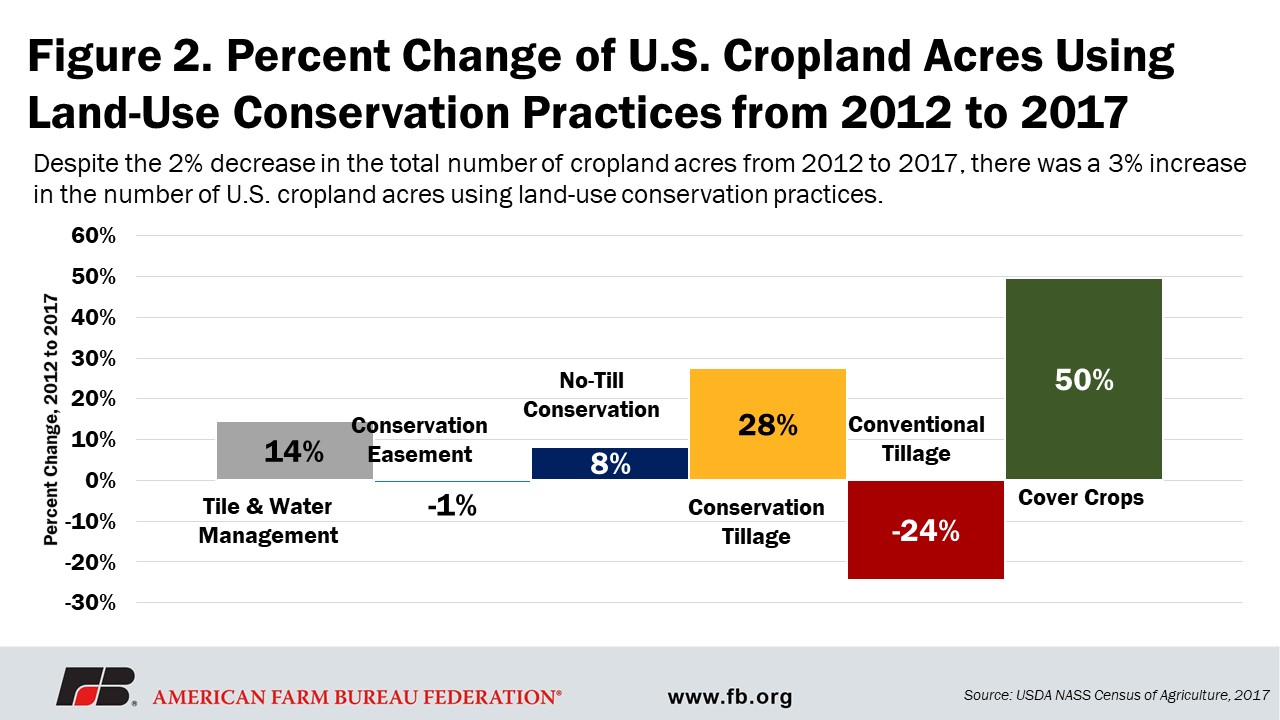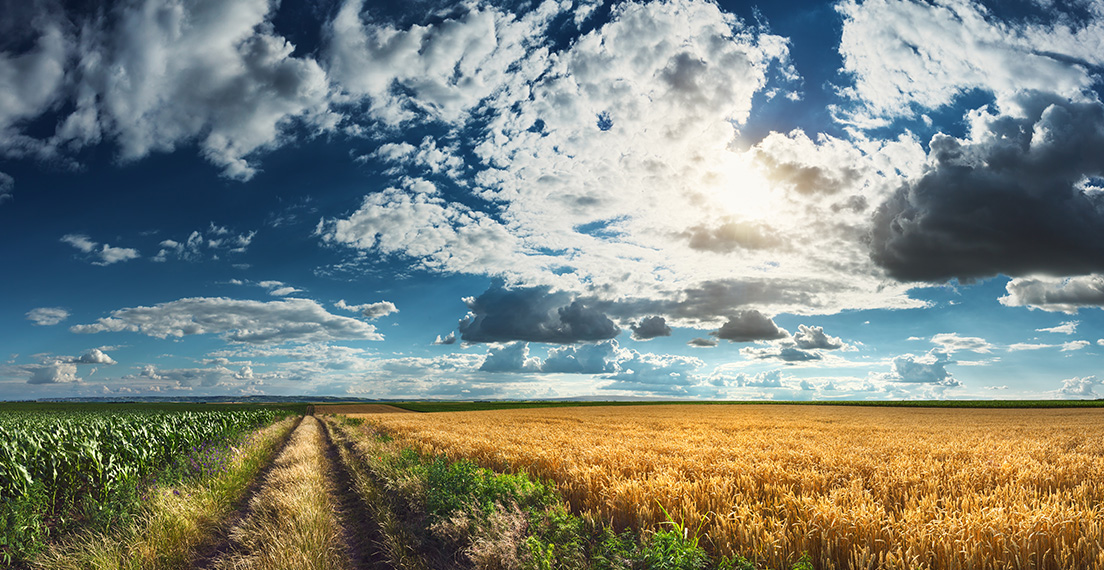U.S. Farmers Embrace Conservation Practices
U.S. wheat farmers know that improving economic and environmental stewardship is increasingly important to the world’s buyers and wheat food processors. In addition to precision agricultural technology, soil and water conservation practices are expanding. Following are excerpts from an article on sustainability and conservation by the American Farm Bureau Federation.
Conservation practices encouraged by the National Resources Conservation Service (NRCS) are used to improve soil health, reduce soil erosion, improve water quality and provide other natural resource benefits.
To maintain basic soil health, NRCS calls on farmers to keep the soil covered, disturb the soil minimally, keep a living cover that feeds the soil throughout the year, diversify crop systems on the soil through crop rotations and cover crops and incorporate livestock into the cropping system. Many of these practices contribute to carbon sequestration, as well as nutrient reduction and water quality/water quantity improvements.
Cover Crops
Cover crops like grasses, legumes and other plants can provide conservation cover if planted before grain crops are harvested or immediately after harvest. Depending on the cover crop mix planted, cover crops can reduce soil erosion and trap and sequester nutrients, like carbon, in the soil. Cover crops have also been used to improve soil biology, reduce weed competition, improve water infiltration and increase organic matter in soil. Cover crops are especially helpful when incorporating livestock grazing into a cropping system, providing an added nutrition source.

Roots and organic matter from cover crops planted and growing before a new commercial crop like wheat is planted help improve soil health and reduce erosion. Cover crops are a growing conservation practice in the United States. Photo credit: Edwin Remsberg and USDA-SARE.
Crop Rotation
Beyond the market incentives, reasons for planting different crops each year include improved soil health and enhanced biological diversity. In addition, crop rotation can reduce soil erosion and reduce pesticide costs, while also improving water quality. If a farmer incorporates a rotation of alfalfa and other legumes, there are fertilizer reduction benefits, as well.
No-till/ Strip-till/Conservation Tillage
Soil compaction is a constant challenge for farmers but limiting disturbances to the soil improves carbon retention and minimizes carbon emissions from soils. Avoiding full-width tillage, regardless of the depth or timing, if done long-term, can add organic matter to the soil as it decomposes and help to reduce soil compaction. Avoiding full-width tillage reduces soil erosion and protects water quality and can help keep water available for plants into the growing season after planting.
Nutrient Management
Precisely managing the source, rate, timing and placement of nutrients like nitrogen or animal manure as fertilizer can reduce the potential for waste or runoff of plant nutrients, which can improve soil conditions and overall crop production, prevent excess nitrogen runoff and reduce input costs.
Buffer Strips
These strips of grass, mixed grasses and legumes run along the contour of a farmed field to create a “buffer.” Buffer strips made up of native plants and grasses remove sediment, nutrients and crop protection products as they pass through, all while helping reduce soil erosion. Buffer strips can also provide habitats for pollinators and other beneficial insects.
Adoption of Conservation Practices
Taken only once every five years, the 2017 USDA Census of Agriculture is a survey-based count of U.S. farms and ranches and the people who operate them. The survey provides the most recent data regarding land use practices by the number of farms and the number of acres. In 2017, 41% of U.S. farmland involved conservation practices, an increase of 3% from 2012.
Figure 1 displays the percent of cropland acres utilizing each of the surveyed land-use conservation practices.

When compared to 2012 when the Census of Agriculture was previously published, the land-use practices aligned with the NRCS conservation practices increased in adoption. Figure 2 shows the percent change of U.S. cropland acres utilizing certain land-use practices from 2012 to 2017.

The most recent data shows the pace in which farms have adopted conservation practices has increased, indicating many farms have been able to implement some version of conservation on their acres.
Read other stories in this series:
Special Climate and Sustainability Committee Launched on Earth Day
Precision Agriculture Improves Environmental Stewardship While Increasing Yields
U.S. Farmers Always Think About Economic and Environmental Sustainability
Technology, Innovative Farming Practices Advance Wheat Farm Sustainability
Minnesota Farmer Spread the News with His Conservation Practices
Farmers Look to New Technologies to Foster Precision Agriculture
Cargill CEO Highlights Farmers Role in Pandemic and Promoting Sustainability


